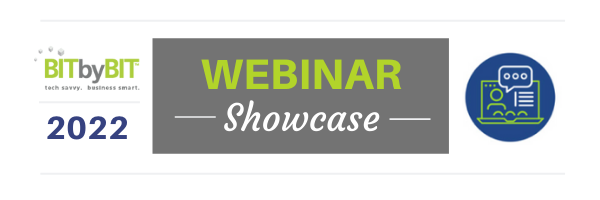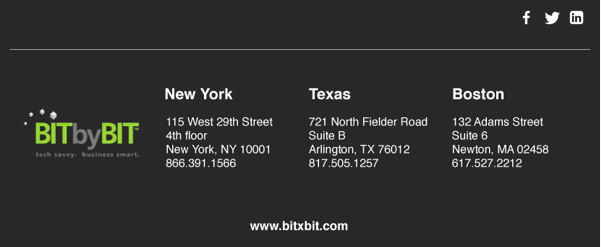What is SOC-as-a-Service?By Robert Blake
Having a Security Operations Center (SOC) in-house is expensive for the average business. Large organizations have a SOC in-house to watch user activity and application uptime 24/7/365. In a SOC, analysts sit in a room and monitor all network traffic to determine if any resources are under attack from either external or internal threats. Considering that real estate, infrastructure, and full-time staff add up to hundreds of thousands of dollars for large organizations, it's out of reach for many small or medium-sized businesses.
To overcome the expenses, businesses have the option of leasing or outsourcing their SOC requirements to a Managed Service Provider (MSP). The MSP will then host SOC-as-a-Service for the organization. The SOC-as-a-Service is a cloud-based system that monitors all organization network traffic without the huge added expense of hosting it on-premises.
How is a SOC Different from SOC-as-a-Service?
In a large organization, administrators might support thousands of servers in the cloud and on-premises. Along with these servers, administrators also support thousands of users, network infrastructure, various cloud services, and mobile devices. It's impossible to manually monitor all these network resources, so a SOC is a centralized department that monitors every resource using cybersecurity analytic applications and log aggregation.
Every network resource collects logs and aggregates them to one location. Cybersecurity applications such as a Security Information and Event Management (SIEM) import logs and provide analysts in the SOC with visualized graphs, charts, and alerts. Security analysts located in the SOC get real-time information about the network environment so they can make trained and educated decisions. Some SIEM applications use artificial intelligence to make automated decisions in intrusion detection and prevention.
Because of the information provided in a SOC, it's a highly secure room within the organization where only authorized security analysts can enter. It contains advanced technology to run an effective SOC, so it's also expensive to build out a SOC. The security analysts must be paid a salary, and they generally demand higher salaries than standard administration. All these factors make a SOC too expensive for the average-sized organization.
SOC-as-a-Service has the same features and functions the same way as a standard SOC, but it runs in the cloud and can be managed by an MSP or other outsourced individuals. Usually, a SOC-as-a-Service is a feature offered by MSPs that will be installed as a cloud-based function with the rest of the MSP's infrastructure installed within the organization.
Benefits of SOC-as-a-Service for the Enterprise
Handing off an on-premises SOC to a cloud-based service has several advantages for large and small enterprises. For large enterprise organizations, it eliminates much of the huge cost associated with staff, real estate, and physical equipment. For smaller organizations, a fully staffed SOC is out of reach due to budget constraints, so a cloud-based SOC provides small businesses with advanced cybersecurity monitoring and analysis.
A few other benefits include:
• Standardized protocols and infrastructure: This benefit is especially great for MSPs responsible for handling numerous organizations and their cybersecurity. By standardizing protocols, the MSP can better deploy infrastructure and keep it consistent across all environments, making cybersecurity easier to manage and respond to threats. Organizations also benefit by getting more efficient infrastructure and cybersecurity support.
• Enterprise monitoring at a fraction of the enterprise cost: An on-premises SOC can cost millions in infrastructure and staffing, but using SOC-as-a-Service lowers the cost. Organizations pay only for resources used during service, so it's a more affordable way to deploy infrastructure and monitor data for common threats.
• Logging for all network resources: Organizations struggle to find resources and storage for logging across all their infrastructure, but cloud-based environments have virtually unlimited storage. An MSP or local administrators can build more efficient and verbose logging solutions across the entire enterprise environment without worrying about limitations in storage resources.
• Better compliance: Staying compliant is always a concern for organizations that must follow regulatory standards, but cloud-based logging and monitoring offered in SOC-as-a-Service solutions eliminates much of the overhead associated with compliant solutions.
• Advanced cybersecurity technology: Advanced cybersecurity infrastructure is expensive, but cloud-based solutions are much cheaper than building infrastructure in-house.
Challenges of SOC-as-a-Service
As with anything in technology, the benefits of SOC-as-a-Service also have some challenges to overcome. Most of these challenges are minor compared to the benefits that an organization gets, but you will face several issues that you should be aware of.
A few challenges include:
• Converting to the new environment: Organizations will find that there is initial overhead, and it might take several months to transition smoothly from an on-premises environment to a cloud-based one. Although the initial overhead might be frustrating and costly, it's worth the investment for the long-term benefits.
• A change in onboarding: A SOC-as-a-Service mainly affects system administrators and analysts but can also affect other new employees. By adding layers of security to your cloud and on-premises environment, users and other staff members might have to change how they access data. Users experiencing new changes must be trained to use new security tools.
• Increase in log storage: Any SOC service needs logs to analyze traffic and detect potential threats. If you don't have a SOC now, you must expand storage reservoirs for log aggregation. SOC tools ingest log data and use it to provide analysts with actionable insights and suggestions to people reviewing network information.
Conclusion
As malware and other security threats evolve, corporations need better ways to detect and defend against them. An on-premises SOC is expensive, but MSPs and corporations can work with a SOC-as-a-Service option to host SOC in the cloud without the large costs associated with building one. Services are more easily accessible, and administrators can quickly deploy SOC services without installing any equipment.
A SOC-as-a-Service is also a favorite for MSPs. They can use the cloud-based SOC to offer effective cybersecurity solutions for all MSP customers. Because a SOC uses more advanced cybersecurity controls, all customers who work with SOC-as-a-Service can detect and stop even the most sophisticated threat.
If you have more questions, please contact us at 877.860.5831 or visit our website at www.bitxbit.com






